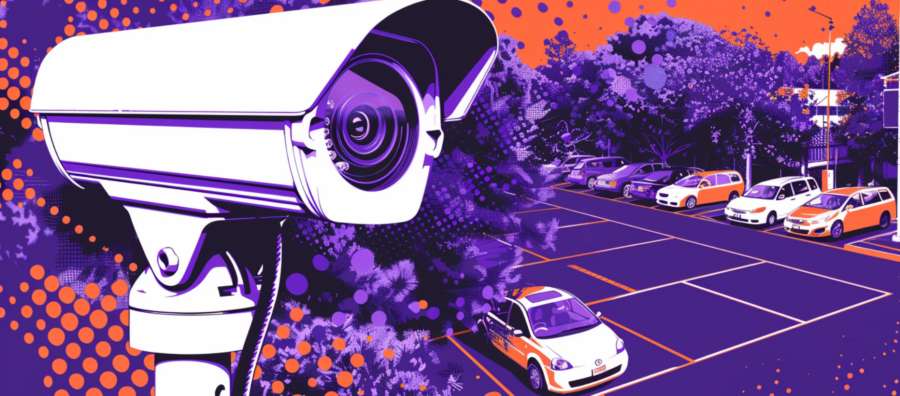The Case for Office Surveillance: It’s Not Just About Catching Lunch Thieves
Security measures like CCTV are no longer optional in many modern office environments. Whether it’s to safeguard sensitive data, protect valuable equipment, or just ensure that Steve from IT isn’t swiping extra snacks (again), surveillance plays a key role in keeping workplaces secure. With physical breaches and cyber-attacks becoming more sophisticated, cameras and other monitoring tools act as the extra set of eyes your security team can’t always provide.But while companies focus on these benefits, employees may view surveillance as an unnecessary invasion of privacy, a sign that they’re not trusted. After all, no one enjoys the thought of being watched while adjusting their desk chair for the fifth time that day. The key here is understanding that surveillance isn’t about micromanaging. It’s about safeguarding everyone’s well-being and ensuring that things stay safe, not about scrutinizing your lunchtime habits.
Employee Concerns: Nobody Wants to Feel Like Big Brother is Watching
Let’s face it: employees get nervous about surveillance for good reason. No one wants to feel like they’re starring in their own private surveillance drama. The anxiety of constant monitoring can even lead to reduced productivity. If every coffee refill or trip to the restroom feels like it’s being cataloged, it’s only natural for employees to feel uneasy.A common concern is how the data from CCTV cameras is used. Are employers watching footage of late-night snack runs or the number of times someone looks longingly at the exit? What if cameras are installed in areas that employees consider too personal—like near the breakroom or by the water cooler, where casual chats happen? Balancing these concerns is essential to ensure employees feel comfortable, and not like they’re about to be called out for taking one too many bathroom breaks.
Transparency is key. Employees should know exactly why surveillance is in place and what it’s meant to achieve. If the aim is to prevent theft, protect sensitive areas, or monitor after-hours activity, make that clear. The more upfront and specific the company is about surveillance, the less it feels like an invasion and the more it comes across as a necessary precaution.
Legal Considerations: When Is It Too Much?
Of course, we can’t talk about workplace surveillance without diving into the legal nitty-gritty. Laws around surveillance vary by region, but a general rule of thumb is that employees have the right to a reasonable expectation of privacy. This means that while cameras are okay in public areas like hallways, entrances, and parking lots, installing them in more sensitive areas—like bathrooms or locker rooms—is an express ticket to a legal nightmare.In many places, it’s also a requirement to inform employees that they are being monitored. This isn’t just a polite heads-up—it’s often the law. Hidden cameras, while they make for great movie plots, don’t fare so well in the courtroom. Employers need to disclose surveillance practices clearly, outlining where cameras are placed, how the data is used, and who has access to it. Failing to do so can lead to lawsuits and damaged workplace morale faster than you can say “privacy breach.”
In addition to this, there’s the issue of how long footage is stored. Holding onto surveillance data indefinitely can raise concerns about data misuse. Clear policies should outline how long footage is kept and when it’s deleted to prevent unnecessary storage of potentially sensitive information.
Balancing Act: How to Implement Surveillance Without Being “That Boss”
So, how do you keep your office secure without turning into the security-obsessed villain of the workplace? It’s all about finding the sweet spot between maintaining safety and respecting privacy. The good news is that with a few thoughtful strategies, you can walk this line gracefully, without stepping on any toes.Start by involving employees in the conversation. Nobody wants to feel like they’re under surveillance without their input. Explain the reasons for the cameras and reassure them that the intent is not to monitor their every move, but to enhance the security of the office. Being open to feedback and concerns will not only help employees feel valued but will also foster a sense of trust.
Another tip: avoid placing cameras in areas that are perceived as personal or where people tend to relax. The lunchroom might seem like a hotspot for petty theft, but it’s also a space where employees wind down. A camera here might feel like an overstep, whereas cameras near entry points or storage areas are seen as more reasonable.
Finally, consider setting up clear policies that protect employees from being monitored too invasively. For instance, surveillance footage should be reviewed only when necessary, not casually or constantly. Monitoring should be about protection, not about keeping tabs on who’s taking the longest lunch breaks.
Security Done Right: How Not to Trip on Your Own Red Tape
When done right, office surveillance can make everyone feel more secure rather than watched. It’s all about walking that tightrope of trust, ensuring that employees feel comfortable in their work environment while knowing they are protected from real threats. As long as transparency and respect for privacy remain at the forefront of any surveillance plan, companies can create a safe, productive workspace where employees don’t feel like they’re living in a sci-fi dystopia.So, if you’re thinking about implementing or upgrading your office’s security measures, remember this: it’s not about creating an Orwellian nightmare. It’s about keeping things safe—without anyone wondering if their boss is secretly auditioning for a role as Big Brother.
A Fine Line, But Not a Tightrope
At the end of the day, balancing security and privacy in the office isn’t as impossible as it might seem. With transparency, thoughtful planning, and a dash of common sense, you can protect both your company and the peace of mind of your employees. Just remember: nobody wants to feel like they’re on camera 24/7—especially when they’re deciding whether to take that last donut.Article kindly provided by dc-electronicsecurity.co.uk

